Dogs love to explore the world around them, which sometimes means pulling on their leash to get closer to what interests them, which can be frustrating for both the dog and the owner. However, there are some things you can do to prevent this! With a little patience and training, you can have a well-behaved dog who walks beside you instead of dragging you down the street! This post will discuss tips on stopping your dog from pulling on the leash.
Why Some Dogs Have Trouble On A Leash
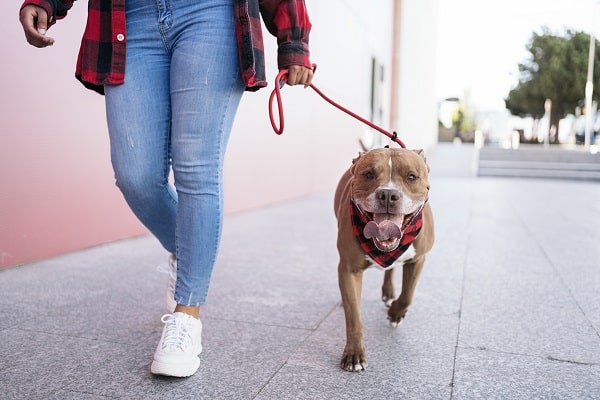
Dogs have been domesticated for thousands of years, and over time, they have become an essential part of many people’s lives. One of the most common ways to enjoy time with a dog is by taking them for a walk on a leash. However, not all dogs take kindly to being on a leash. Some dogs may become anxious or even aggressive when restrained in this way. There are several reasons why this may be the case. First, dogs are pack animals, and in the wild, they roam freely together. As a result, they may view being on a leash as a form of confinement.
In addition, Dogs are extremely sensitive to body language and movement. If their human companion is tense or nervous, the dog will pick up on these cues and become agitated. Finally, some dogs have more energy than others and may find it challenging to stay calm when on a leash. For these dogs, it is essential to provide plenty of exercise and mental stimulation so that they can stay relaxed and focused.
Reasons Your Dog Is Pulling On The Leash
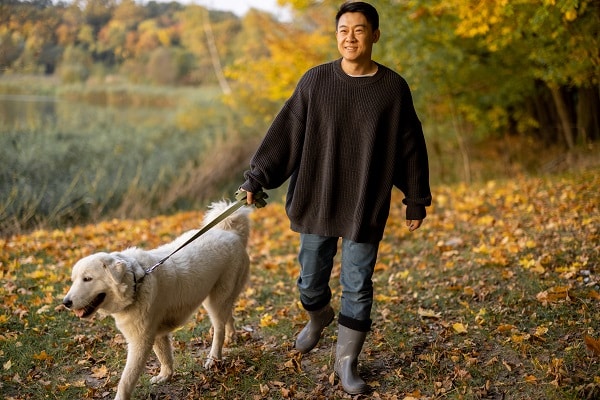
Although they can have many different reactions to being on a leash, most dogs exhibit the same signs when pulling on the leash. For example, you may notice your dog suddenly speeding up or trying to go in the opposite direction, which can often signal that your dog is feeling anxious or frustrated. Additionally, if your dog begins to paw at the leash or bark, it could signal that it is trying to get your attention.
Furthermore, many dogs will adopt a high-pressure stance when pulling on their leash. Their head may be raised, and their tail held high, making it difficult for the owner to regain control over the situation. If you notice your dog exhibiting any of these behaviors, it is vital to take steps right away to correct this behavior before it becomes a habit.
Tips To Stop Your Dog From Pulling On The Leash
While you may have tried many methods to get your dog to stop pulling on the leash, some tried and true tips will help you achieve this goal. These include:
Use Positive Reinforcement

One method to stop this behavior is to use positive reinforcement. Whenever your dog walks next to you without pulling, give your dog a treat or verbal praise. Over time, your dog will learn that it gets rewards for walking politely and will be less likely to pull on the leash. When doing this, it is essential that you are consistent with your rewards and do not provide them too frequently, as your dog may become less motivated to avoid pulling.
You should also avoid using negative reinforcement, such as yanking or pulling on the leash, which can be counterproductive and will likely only make your dog more anxious or scared of being restrained.
Create A Specific Command
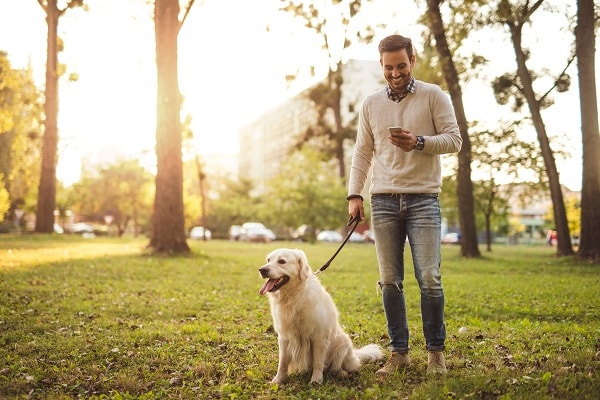
Creating a specific command or cue that your dog can pick up on that means to stop pulling can also help you stop this behavior. For example, if you say “easy” in a calm voice when your dog is about to pull, your dog will learn that this means to slow down and relax. Over time, the dog will respond to this command without needing any treats or rewards, which will also help them develop better focus and a stronger connection with you, making walks more enjoyable for both of you.
Remember to keep the same command and tone of voice each time you use it, which will help your dog learn and respond more quickly to the command and prevent them from becoming confused.
Be Consistent With Training
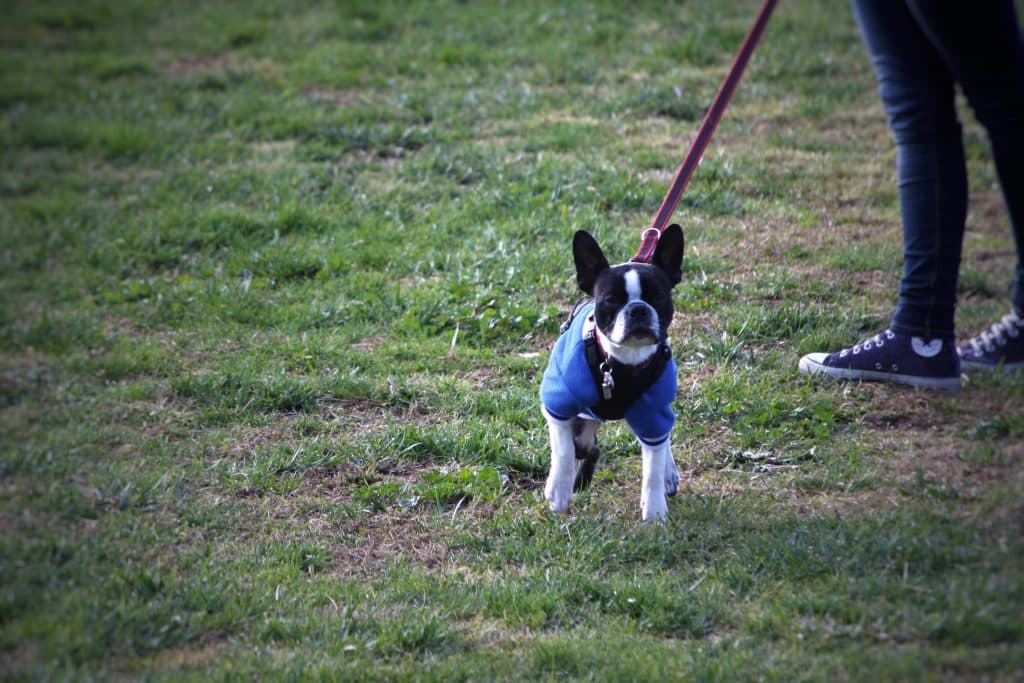
Another vital part of training your dog to stop pulling is consistency, which means that you should walk at the same time every day, use the same commands during walks, and stick to a specific route so that your dog can get used to his surroundings. Developing a routine will help keep your dog calm and focused on the task at hand rather than becoming distracted by new sights and smells.
In addition to consistent training, it is also essential to be patient with your dog as he learns how to walk politely on a leash, which may take some time, but with dedication and consistency, you will be able to get the results that you want.
Make Sure They Are Calm Before The Walk

Something that may also help to prevent your dog from pulling on the leash is to make sure that they are calm before starting any walk, which may mean giving him some toys or treats beforehand, spending time playing with him, or engaging in other calming activities together, such as going for a car ride.
By ensuring that they are relaxed and happy before heading out, you can help them focus on the task at hand and reduce any anxiety or excitement that may cause them to pull. And if you don’t have the extra time, you can just do something simple like pet them and tell them to lie down in a calm voice.
Work On Changing Pace
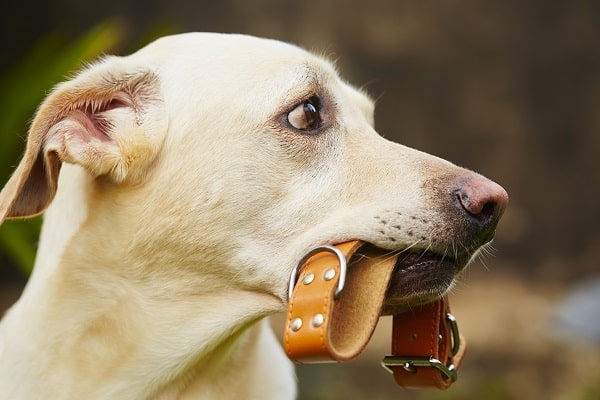
Finally, to help stop your dog from pulling on the leash, it can be helpful to work on changing pace or direction during walks, which will help them stay focused and prevent them from pulling too hard to get where they want to go. For example, you could walk a little faster when your dog pulls, which may make them think twice before trying to pull again.
You could also try changing direction or walking around a corner, which will help keep them on their toes and make it less likely that they will pull, which can help keep your dog engaged and prevent them from going through the same repetitive motions during walks.
Start Teaching Your Dog To Stop Pulling On The Leash!
Overall, there are many different tips and techniques that you can use to stop your dog from pulling on its leash. Whether you use positive reinforcement, try a specific command or cue, or work on changing pace and direction, the key is to be consistent, patient, and persistent with your training to achieve the best results. With dedication and effort, you will be able to help your dog learn how to walk politely on their leash and make walks more enjoyable for both of you.